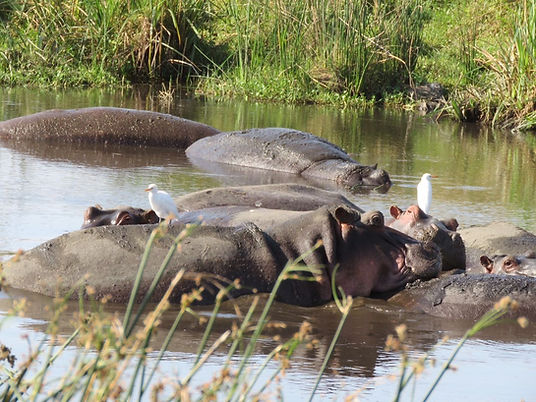Get your khakis ready. You are about to travel into the wilds of Africa and see some of the world's most amazing animals! Before you are taking selfies with Giraffes, we thought you might like to know what it's going to be like out there.
Typical Daily Routine
Breakfast - Wake up and enjoy breakfast provided at your accommodation.
Game drive - Your safari guide will drive you in the day's scheduled area, providing information about the location and animals.
Lunch - Enjoy a picnic lunch before the afternoon's adventure.
Game drive - Game drive will resume as animals become more active with cooling temperatures. Then, you will be driven to the night's accommodation.
Dinner - Enjoy dinner at your all inclusive accommodation.
After dinner - Question and answer time - learn about where you will adventuring the next day and ask questions about the animals you saw. You can also listen as nocturnal animals become active, and maybe hear the roar of lions.

Safari Day Pack
Each morning pack your day pack, you will be driving through the wilds of Africa, viewing incredible animals. You will definitely want to be able to take pictures! But the environment for the safaris can be harsh. It is best to have sun protection and we will provide you with H2O. Most of your safari items should be packed away, but you will want to keep some items handy. We suggest having the following items in a small day pack:
-
valuables such as your passport, money, & phone
-
sunglasses
-
water bottle
-
sunscreen
-
lip balm
-
camera (with extra storage and batteries)
-
sun hat
-
binoculars
-
bug spray
But remember to review everything you need to pack for Kilimanjaro, Meru, or a Safari.
Dos and Don'ts
Make your safari as safe and memorable as possible by following these Dos and Don'ts
-
Do take the best pants for a safari, convertible zip off pants, Don’t pack jeans (they can attract pesky tsetse flies)
-
Don’t wear Camo (negative military relationship), perfume or cologne
-
Do pack solid colored fleece, Don’t pack flannel
-
Do take lightweight layers (quick dry fabric is best) in neutral earth tones colors, Don’t take black or dark blue (again, attracts tsetse flies)
-
Do take tan clothing, Don’t take white clothing
-
Do look at a safari, Don’t dress like one (ie. animal prints) some refuges have even banned these
-
Do pack 20kg in a light soft sided bags for safari, Don’t forget your day pack for snacks and essentials
-
Do bring cash, Don’t rely on credit cards, remember you will be in the bush
-
Don’t expect smooth roads, they Do get bumpy in the bush
-
Don’t leave any trash, Do respect that you are in the wild
-
Don’t walk around at night, Do remember you are with wild predators
-
Don’t have unrealistic expectations as to what animals you might see, Do remember that each animal has its own uniqueness (ie. 8,000 wildebeests calved each day in Serengeti between December and March, Wow!)

Tipping
Tipping is an universal custom on Kilimanjaro, Meru, and the safari. Sadly, without regulation, tipping is a vital source of income for many people associated with the safari industry.
At Kilimanjaro and Beyond we are committed to paying our staff higher than average wages. That being said, we still believe it is important to tip the phenomenal guide/driver that will show you the wonders of Africa. The vast majority of our adventurers are more than willing to tip according to the guidelines below. After meeting and seeing the incredible work put in by the Kilimanjaro and Beyond staff, we sincerely hope you agree.
If the tip amount adds too much to your trip expense, we are more than happy to customize a tour that meets your needs better.
The average recommended tip:
-
$20 a day per group for the driver
-
$1 to $2 per bag to bellhop
-
Lodges provide a general tip box for accommodation staff
Thank you in advance for your generosity.
Game
Enough with the boring details, take a peak below at some of the animals you could see on your safari!
 |  |  |
|---|---|---|
 |  |  |
 |  |  |
 |  |  |
 |  |  |
 |  |  |

